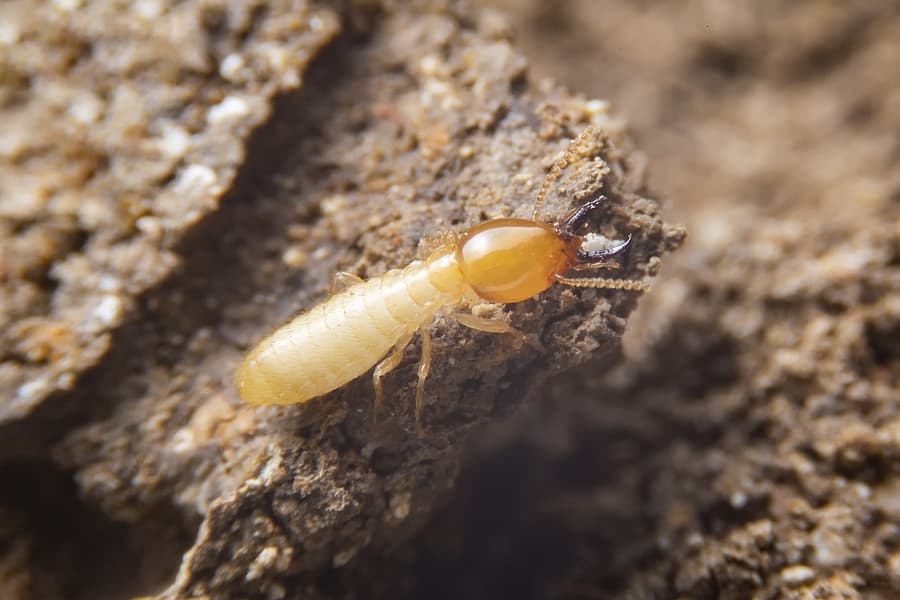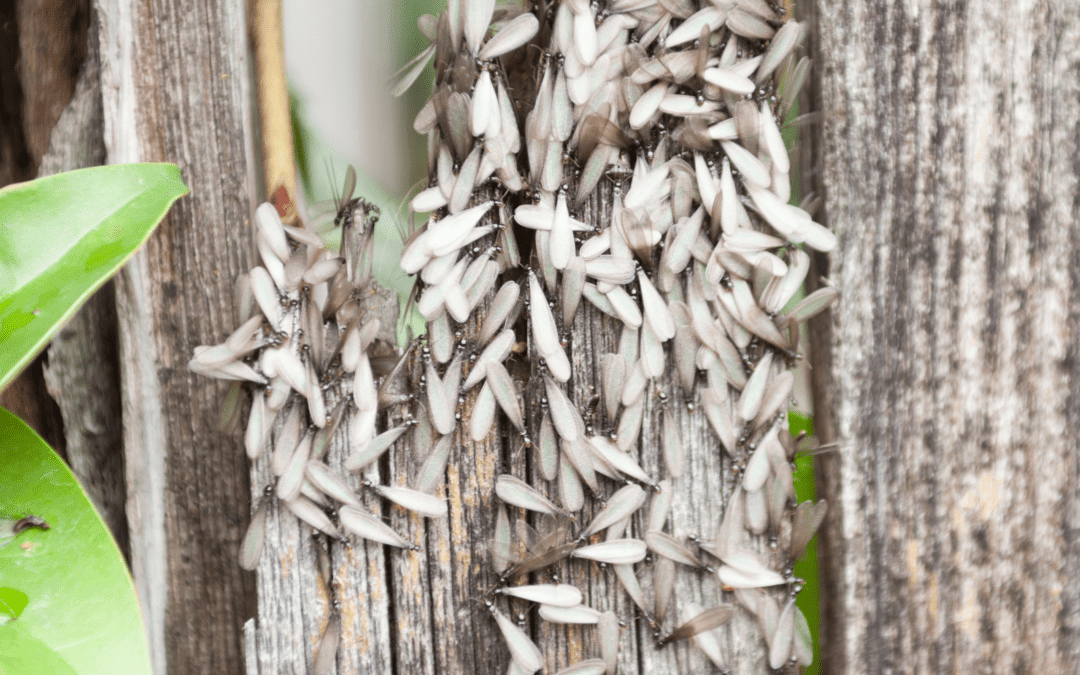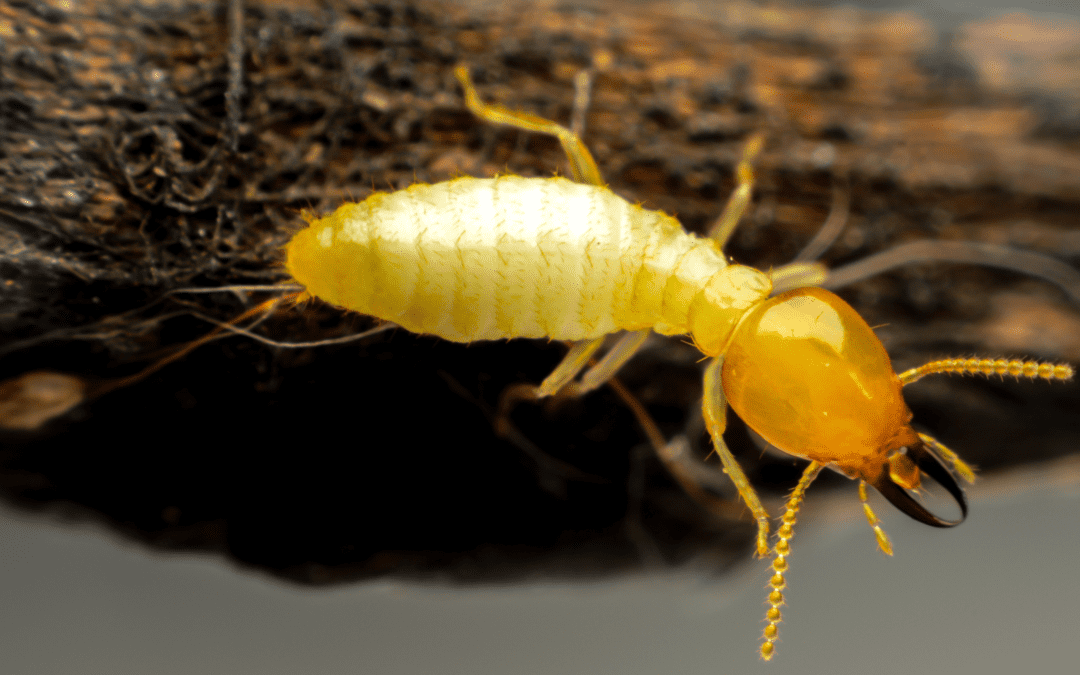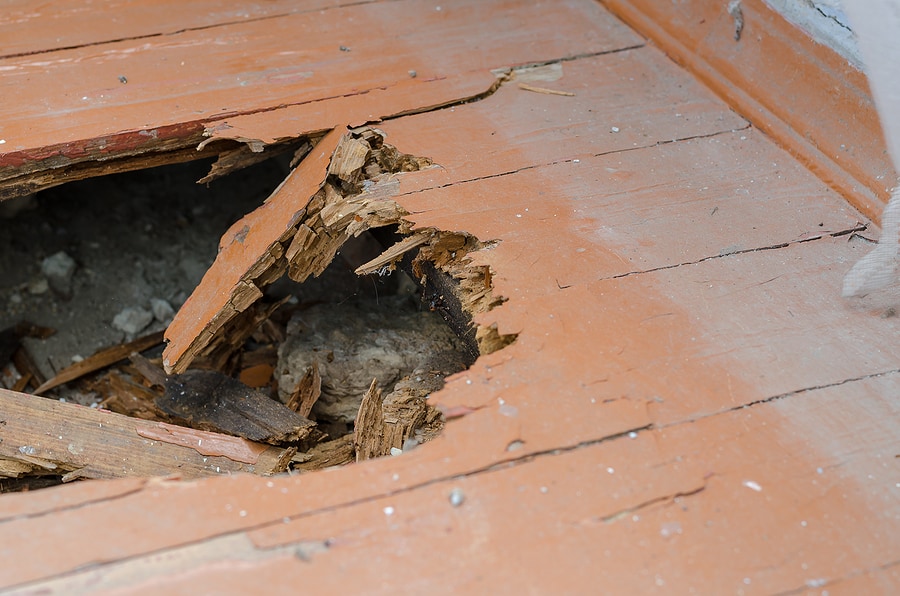READY TO GET STARTED?
REQUEST A FREE ESTIMATE
Fill out the form below or call (888) 466-7849 for a free, no-obligation estimate.

Termites are year-round pests, causing structural damage to homes and properties. The Miami-Gardens climate is hot and humid, the perfect conditions for termites. Every homeowner should implement termite control by placing certain preventative measures throughout their property to help avoid a termite infestation.
One of the most common termites in the U.S. is the subterranean termite. These termites live in colonies underground and will build mud tubes to reach food above the ground. They will often create contact between wood and soil in crawlspaces or areas underneath your home for an entry point.
Throughout your property, make sure that you keep all lumber, wood, and mulch away from your foundation. If you are utilizing firewood, look to place it at least 20 feet away from your home, raised about 8 inches off the ground and stored in plastic containers with lids. If you have a wood fence near the home, make it a routine to check for rotted or infested wood.
Most termite species need moisture to survive, often looking to our homes to find it. To help reduce the risk of termites infesting your home, reduce moisture inside and outside. Check that your gutters and downspouts are pointing away from your foundation. If you’re using a sprinkler, make sure it isn’t spraying on your home. Look inside your home for any plumbing leaks; don’t forget to check your crawlspace for leaks too. Consider investing in crawlspace enclosure, as this will reduce moisture, decrease humidity, prevent mold, avoid wood rot, and prevent termite infestations.
Termites can be hard to spot on your own. These pests can go undetected for long periods, causing significant damage before you realize they’ve been there. Consider reaching out to your local Miami-Gardens pest control company which can perform an annual termite inspection. These professionals can identify signs of termites and take quick action for termite treatments to avoid a full-blown infestation. Even if you don’t suspect you have termites, it’s always a good idea to get ahead of the game when it comes to protecting against termites.

For most homeowners, including those in Bonita Springs, the first sign of a termite infestation is seeing a swarm of flying insects. Not all swarming insects are termites though – some can be flying ants. Let’s break down the physical characteristics to determine the differences between the two.
There are three easy ways to tell flying ants and termites apart:
These two pests also have behavioral differences. They both live in large colonies with designated levels of caste systems. Termites can also be found in decaying trees, stumps, wood debris, lumber, and wooden structures. Some ants, like carpenter ants, inhabit wood, but most other species do not. Unlike ants, termites can cause major structural damage since they eat wood, and ants do not.
They also have different life cycles. Ants go through four stages of development, while termites only have three. During the warm months of swarming season, the fertile winged ants and termites fly from their nests to mate and establish new colonies, making it more difficult to tell the difference between the two pests.
If you believe you have termites causing damage to your home, reach out to your local Bonita Springs pest control company, who can provide a free inspection and a service plan that is right for you and your property.

Hot, humid weather is inevitable when you live in the Fort Lauderdale area. Unfortunately, pests like termites thrive in these conditions, looking to our homes for a food source. Termites will eat wood inside out, sometimes going undetected for a long period of time. Some common termite species include drywood termites and subterranean termites. To enhance termite control around your home, it’s important for every homeowner to utilize preventative measures throughout their property.
Improper drainage is one of the most common reasons termites infest. Subterranean termites are looking for moist wood to infest, causing significant structural damage. Our gutters often clog, causing water to pool and create insulation vulnerable to termites. Likewise, the leaves, twigs, and debris can get caught and build up in gutters, softening your roof and causing it to rot. Divert your down-spout away from your home and consider utilizing splash blocks to prevent pooling water.
Showing off your beautiful landscaping and a green, lush yard is ideal for every homeowner. Unfortunately, the materials we sometimes use to create this can be beneficial to termites. Landscaping mulch can be aesthetically pleasing, but unfortunately, it can attract termites into our homes. Try to minimize your use of mulch but if you do utilize it, keep it away from your foundation by at least 15 inches.
Excessive moisture can cause multiple problems for your home, including termites. Leaking pipes or lack of airflow can create an ideal environment for these pests. A major step in preventing termites is eliminating excessive moisture inside the home. Enclosing your crawlspace is a great way to not only prevent termites and other pests, but to also improve the overall health of your home.
If you’ve taken as many precautions as possible to avoid termites but are still looking for extra protection, consider reaching out to your local Fort Lauderdale pest control company. These professionals can provide you with a termite inspection and a treatment and prevention plan customized to your home.

Did you know that termites can cause extensive damage that can compromise the integrity of your home’s structure? Most homeowners insurance policies do not cover damage caused by termites or other pests. It’s imperative to have a termite control system in place for your Pompano Beach home, ensuring you and your family don’t have to worry about future damage. Let’s go over the many different types of termite treatments that will keep your home safe from structural damage!
A no-tent termite treatment is an excellent alternative to tent fumigation and can make treating your home for drywood termites a much easier process. This service addresses the unique behaviors of South Florida’s drywood termite species. Drywood termites create colonies in wood, with no connection to the ground necessary. They also need very little moisture and are often found in attic trusses, fascia boards, and soffit areas.
The benefits of “no tent” treatments are:
This termite service is best used when subterranean termites are the problem. It is an environmentally-friendly solution that involves placing green bait stations along the exterior perimeter of your home. The bait system doesn’t allow termites to molt, grow, or develop correctly, resulting in the total elimination of a termite colony. This baiting system helps to control subterranean termites, including the Formosan and Asian subterranean termite species.
Benefits of termite bait systems include:
Another way to combat subterranean termites is with liquid defense. This solution has proven to work in the most challenging situations, climates, and environments to eliminate subterranean colonies. This effective treatment requires a trench to be dug around the foundation perimeter, and then a termiticide is injected in proper intervals. It doesn’t kill the termites immediately but gives them time to bring it all the way back to the queen, ultimately eliminating the entire colony.
Benefits of liquid termite defense:
If you notice termite damage in or around your home or property, it’s best to contact your local Pompano Beach pest control company. They will be able to professionally assist you with your needs and find the best termite solution for you and your home.

Subterranean termites are considered to be the most damaging species of termite of all. These termites can damage the infrastructure of buildings and homes, putting them at risk for catastrophic consequences. Subterranean termites are found in every US state except Alaska.
It can be hard to detect subterranean termites as they eat wood from the inside out, often staying hidden until significant damage is done. They can enter through stucco, slab foundation, or any other hidden area with access to the structure. In order to prevent termites, it’s important to recognize the signs you may have an infestation. Here are 6 signs of subterranean termites:
One of the earliest signs of subterranean termites are termite swarms. Termite swarms emerge in the spring or early summer to reproduce and establish new colonies. Seeing a termite swarm indicates the presence of a nearby colony and indicate another colony will be starting up soon, increasing your risk of an infestation inside your home.
Mud tubes are another indication of subterranean termites. These are tubes they build to travel back and forth between your home and their nest. They protect them from damage and predators and allow them to accumulate moisture which termites need to survive. Mud tubes are typically about the size of a pencil and can be on walls, ceilings, floors, exterior surfaces, and on the sides of slabs.
Termites don’t just leave visual clues to their presence – you can also hear them! If a colony is larger and established, you may hear a faint clicking or knocking sound behind your walls or in other voids. The noise is the sound of soldier termites banging their heads against wood or vibrating their bodies to indicate danger is imminent. You can even sometimes hear the worker termites chewing through the wood of your home.
During an annual termite inspection, a termite control technician may tap the wooden surfaces of your home. If termite damage is present, you will hear a hollow or paper sound instead of a solid thud when tapped. You can also look for blistering or bubbling paint or other abnormalities in or near wood structures, including window and door trim. Termite damage can often mimic water damage.
When subterranean termites tunnel through wood, they push debris and waste out behind them through tiny openings. Frass is the name for this waste they excrete. If you notice pin-sized holes with small black marks or dark powdery substance around them, these indicate the presence of kick out holes made by the termites. You may also see piles of sawdust looking material which is the frass.
Floor, door, and window damage may also indicate a termite infestation. Sagging floors can indicate a well established infestation. Take note of any floors that buckle or sag and have them inspected. Doors and windows are another area that may indicate a problem. When these structures warp or don’t open and close smoothly, it can indicate the presence of termites, as well.
If you have any of these signs of termite damage, contact your local pest control company for a thorough inspection and treatment plan.